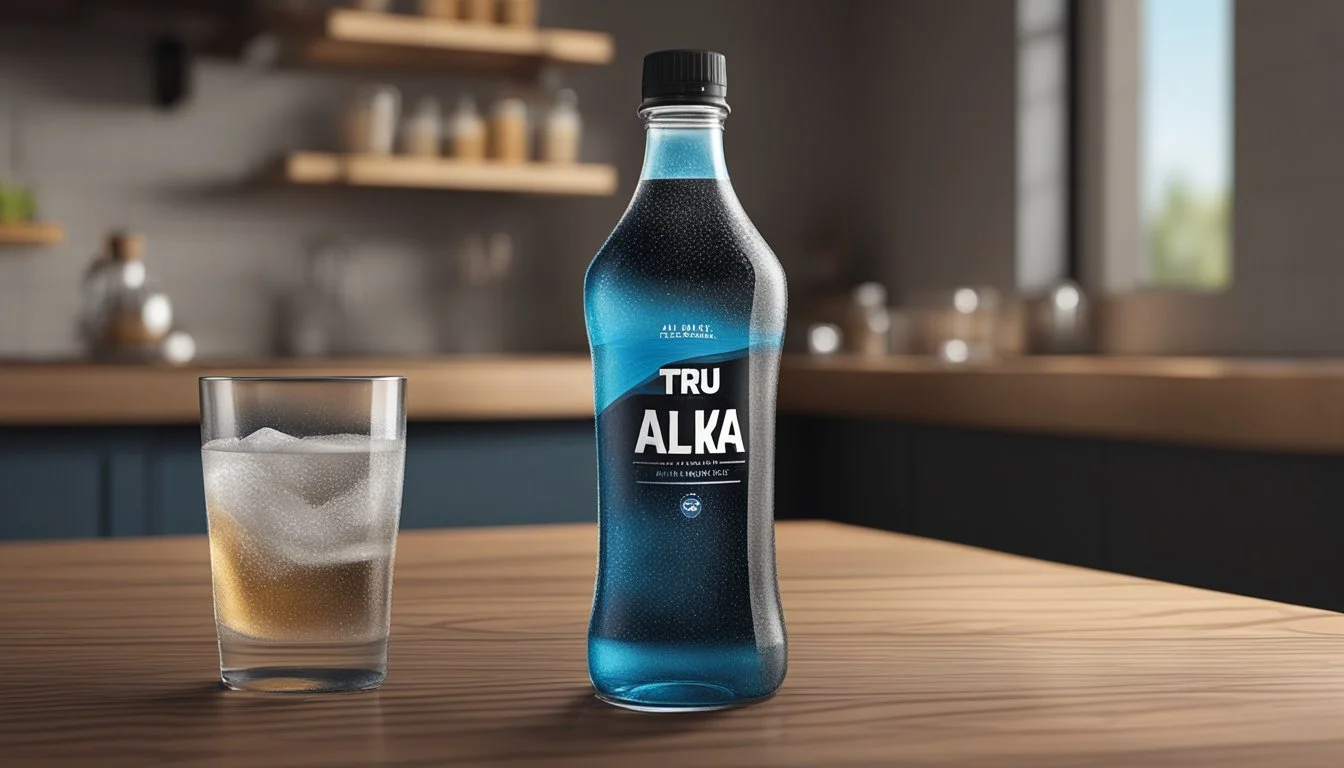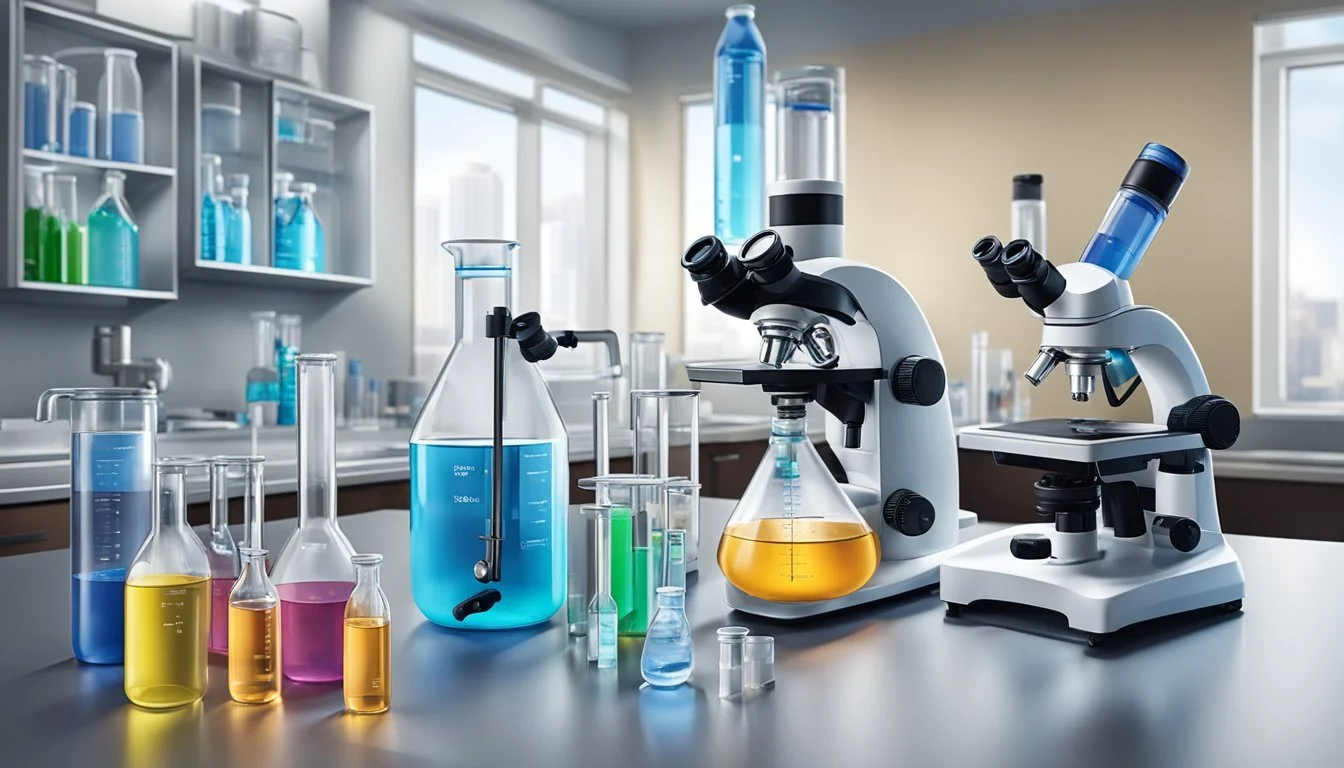Tru Alka vs. Blk
Comparing Two Premium Bottled Waters
Choosing the right bottled water can be a matter of personal preference and health considerations. When comparing Tru Alka and blk. water, Tru Alka stands out due to its high alkaline nature with a pH level typically around 9 to 10. This alkalinity is believed to help neutralize acidity in the body, potentially contributing to better health.
Blk. water, on the other hand, is renowned for its unique black color, derived from the addition of fulvic minerals. Its premium pricing positions it as a high-end product, though some may question whether it offers comparable value to other mineral-rich choices.
Ultimately, personal preference plays a significant role in deciding which bottled water is superior. While Tru Alka offers specific health benefits through its alkaline property, blk. water attracts attention with its distinct look and added minerals. Both brands cater to specific needs, whether you’re looking for health benefits or a unique hydration experience.
Understanding Bottled Water
Bottled water comes in various types, each with distinct characteristics, making it crucial to grasp their differences. Labels offer key details, while regulations ensure safety and quality.
Types of Bottled Water
Spring Water: Sourced directly from natural springs, spring water is celebrated for its freshness. It typically contains natural minerals that enhance taste.
Mineral Water: This type contains specific amounts of minerals such as calcium and magnesium. It must come from a protected underground source and be bottled at the source.
Purified Water: Undergoes a significant purification process to remove contaminants, resulting in high purity. Methods include distillation, deionization, or reverse osmosis.
Alkaline Water: Known for a higher pH, often around 8 or 9, it aims to neutralize acidity in the body. It's sometimes infused with added minerals.
Sparkling Water: Contains dissolved carbon dioxide, either naturally or artificially added, to create bubbles. It can be spring or mineral water.
Label Interpretations
Label interpretation is essential when selecting bottled water. Here’s what to look out for:
Mineral Content: Labels often list amounts of minerals like calcium, magnesium, and sodium. This helps determine the water’s nutritional value and taste.
pH Level: A water’s pH can indicate whether it’s more acidic or alkaline. For example, alkaline water will have a pH above 7.
Source Information: Indicates where the water is sourced. Terms like “spring”, “artesian”, or “glacier” specify the source's characteristics.
Purification Methods: Details such as "distilled", "deionized", or "reverse osmosis" inform about how the water was purified, which might affect taste and purity.
Additives: Some bottled waters have added minerals or electrolytes, which can be noted on the label.
Bottled Water Regulations
Government regulations ensure bottled water safety and standards. Key points include:
FDA Standards: In the United States, the FDA regulates bottled water, setting stringent standards for safety and labeling.
International Standards: Other countries have similar authorities regulating quality, such as the European Food Safety Authority (EFSA) in Europe.
Quality Control: Bottled water companies must regularly test their water for contaminants. They must ensure compliance with microbiological, chemical, and radiological standards.
Label Accuracy: Regulations demand accurate labeling, including correct source declarations and purification methods to ensure consumer transparency.
Health and Hydration
Understanding the health benefits and hydration properties of Tru Alka and blk. water is crucial for making an informed choice. This section explores the roles of electrolytes, the importance of water in bodily functions, and how hydration compares with taste.
The Role of Electrolytes
Electrolytes, such as sodium, potassium, and magnesium, are critical for conducting electrical impulses in the body. Tru Alka water is often infused with these minerals to boost hydration and health.
In contrast, blk. water includes fulvic acid, which contains trace electrolytes, offering different supplementation. Proper electrolyte balance aids muscle function and prevents cramps, making it essential for active lifestyles.
Both waters aim to provide beneficial electrolytes, but their methods and mineral contents vary, which influences hydration efficiency and overall wellness.
Water and Bodily Functions
Water is vital for nearly every biological process, including digestion, circulation, and temperature regulation. Tru Alka, with its alkaline pH, is suggested to neutralize body acidity, contributing to general wellness.
On the other hand, blk. water, through its unique composition, claims to enhance nutrient absorption and detoxification. Staying hydrated aids in maintaining the body's fluid balance, which is essential for kidney function and joint lubrication.
Despite different formulations, both Tru Alka and blk. aim to support these fundamental bodily functions effectively.
Hydration vs. Taste
When it comes to choosing bottled water, taste often goes hand in hand with hydration properties. Tru Alka water, with its high pH, has a distinctive taste that some find refreshing and others may not. Its mineral content can give a subtle, yet noticeable flavor.
Blk. water has a unique appearance and taste due to its fulvic acid content. This can be either appealing or off-putting, depending on individual preferences.
While hydration is paramount, the enjoyment of water largely depends on personal taste preferences, which can vary widely among individuals.
Chemical Composition and Quality
Examining the chemical composition and quality of Tru Alka and Blk bottled waters reveals key differences in their pH levels, mineral contents, and potential contaminants.
Understanding pH Levels
Tru Alka water is marketed as alkaline with a pH level typically above 7.5. This higher pH level is believed by some to neutralize acidity in the body and promote better hydration.
In contrast, Blk water, infused with fulvic acid, also tends to be slightly alkaline but is known more for its distinct dark color which comes from the fulvic minerals.
Mineral Composition and Water Quality
Tru Alka contains essential minerals like calcium, magnesium, and potassium. These minerals are crucial for various bodily functions, including bone health and muscle function.
Blk water is enriched with fulvic and humic acids that contribute not only to its color but also to its potential health benefits. It may contain trace amounts of sodium along with other minerals, which can supplement the daily mineral intake.
Assessment of Contaminants
Ensuring the absence of contaminants is essential for water quality. Tru Alka undergoes rigorous purification processes to remove any impurities, ensuring high purity levels.
Blk water sources its minerals from ancient, plant-based matter, which must be free from harmful contaminants to be safe for consumption. Both brands are subjected to stringent testing to meet safety standards, assuring consumers of their reliability.
Environmental and Sustainability Considerations
This section evaluates the environmental and sustainability aspects of Tru Alka and Blk bottled waters, focusing on bottle material, water sources, and ecological impacts of production.
Bottles: Glass vs. Plastic
Tru Alka and Blk use different materials for their bottles. Tru Alka predominantly opts for plastic bottles, which are lightweight and convenient.
Plastic bottles, though recyclable, often end up in landfills, contributing significantly to plastic pollution.
Blk, however, offers more of its products in glass bottles. Glass is often considered more environmentally friendly because it is recyclable and reusable.
Using glass reduces plastic waste but increases the carbon footprint due to its weight and the energy required for manufacturing and recycling. Consumers must weigh the balance between convenience, ecological impact, and sustainability.
Water Source and Sustainability
Natural water sources define the sustainability of both brands. Tru Alka's water undergoes an advanced purification method to maintain high pH levels, which may involve significant resource use.
Their approach focuses on providing alkaline water, known for its health benefits.
Blk sources its water from natural springs, which offers a unique blend of minerals. Sourcing naturally often minimizes processing and energy consumption, contributing positively to sustainability.
However, continuous extraction from springs must be monitored to ensure it doesn’t deplete the natural water sources or disrupt local ecosystems.
Ecological Impacts of Production
The production of bottled waters has varied ecological impacts. Tru Alka's advanced purification methods involve energy-intensive processes, potentially increasing its carbon footprint.
Given the high pH levels intended in Tru Alka's products, the methods may involve more elaborate filtration systems.
Blk’s ecological footprint is influenced by its bottle material and water source. Glass bottle production, while reducing plastic waste, typically results in higher energy consumption.
Moreover, ensuring the sustainable extraction of natural spring water is critical.
Both brands must address these ecological challenges to improve their environmental sustainability. Sustainable practices and innovations in packaging and production are essential to minimize their ecological impacts effectively.
Water Processing Techniques
Different bottled water brands employ several advanced techniques to ensure that the water is pure, safe, and beneficial for consumption. These techniques involve various stages of treatment to achieve desired quality and taste profiles.
Reverse Osmosis and Purification
Reverse osmosis involves forcing water through a semipermeable membrane to remove impurities and contaminants. It's a common method used by many bottled water brands, involving several steps to ensure high purity.
This process eliminates a wide range of substances, including salts, bacteria, and chemical pollutants. Tru Alka utilizes reverse osmosis to achieve its signature purity. After reverse osmosis, some brands may introduce additional purification stages such as activated carbon filters to enhance taste and remove any residual contaminants.
Filtration and Ionization
Filtration techniques vary, but they often include multi-stage processes like sediment filtration, carbon filtration, and micron filters to remove particles, chlorine, and other unwanted elements. Tru Alka uses advanced filtration to ensure the water is free from impurities like heavy metals.
Ionization is another critical step in producing alkaline water. This process involves passing the water through electrified plates, separating it into acidic and alkaline parts. The alkaline component, rich in beneficial minerals, is bottled, offering potential health benefits such as balancing body pH levels.
Distillation and Mineral Additions
Distillation involves heating water to create steam, leaving contaminants behind, and then condensing the steam back into liquid form. This method effectively removes a wide range of impurities, including bacteria and heavy metals. While distillation provides nearly pure water, it also strips the water of beneficial minerals.
Tru Alka counteracts this by carefully adding essential minerals back into the water after distillation. These added minerals, such as calcium and magnesium, not only enhance taste but also contribute to the water's alkalinity and potential health benefits. The result is a clean, mineral-rich water that supports hydration and overall wellness.
Comparing Tru Alka and Blk
Tru Alka and Blk offer distinct differences in their pH levels, flavor profiles, and pricing, making each suitable for different preferences and needs.
pH and Alkalinity Profiles
Tru Alka water boasts a high pH level, typically ranging from 9 to 10. This high alkalinity is designed to neutralize body acidity and is often chosen for its potential health benefits. Consumers interested in alkaline water may find Tru Alka an attractive choice due to its consistent alkaline properties.
Blk, on the other hand, is not specifically marketed as an alkaline water. It derives its unique black color from fulvic trace minerals. While it doesn't highlight pH levels the same way Tru Alka does, Blk’s focus is more on providing these trace minerals, which are said to support various health benefits.
Taste and Flavor Perspectives
Tru Alka’s flavor is influenced by added electrolytes, giving it a smoother texture but with a slightly distinct taste that some people may find appealing. Its high pH and added minerals can contribute to a unique taste experience, appealing to those who prefer a subtly enhanced flavor.
Blk water has a noticeable difference in appearance due to its black hue from fulvic minerals. Its taste may also be distinct but is often described as clean, despite its visual difference. The emphasis on natural trace minerals in Blk can provide a different flavor dimension compared to traditional bottled waters and especially compared to Tru Alka.
Price Point and Value
When it comes to cost, Tru Alka is often priced at a premium due to its high pH levels and the inclusion of added electrolytes. Consumers looking for alkaline water with specific health claims might find this price justified.
Blk tends to be marketed as a premium option due to its unique appearance and the presence of fulvic trace minerals. It targets a niche market interested in alternative health products. As such, both options are positioned as premium bottled waters but cater to slightly different consumer interests, whether it be alkaline properties or mineral content.
Consumer Preferences
Consumers often choose bottled water based on their personal taste preferences, dietary needs, and regional influences. Additionally, recommendations from water sommeliers can shape their choices.
Personal Taste and Diet Considerations
Individuals select Tru Alka or Blk based on taste and dietary requirements. Tru Alka offers a high pH level, providing a smooth, slightly sweet taste. Its alkalinity appeals to those seeking to balance their body's acidity.
Meanwhile, Blk water, enriched with fulvic minerals, has an earthy flavor unique to this brand. This distinct taste caters to individuals looking for mineral-rich hydration. Preferences vary, with some consumers choosing Tru Alka for its clean taste and others opting for Blk due to its distinct mineral profile.
Cultural and Regional Water Choices
Cultural and regional factors play significant roles in bottled water preferences. In areas where water quality is trusted, convenience and brand recognition guide choices. Regions with mineral-rich water sources might lean towards brands like Blk for their additional health benefits.
Metropolitan areas often showcase a preference for trendy or health-associated brands. Advertising and regional availability also influence consumer decisions. Both Tru Alka and Blk find their niche markets depending on these regional and cultural dynamics.
The Influence of Water Sommeliers
Water sommeliers have become influential in guiding consumer preferences. Their expertise on water's taste profile, mineral content, and source purity offers authoritative recommendations. They emphasize aspects like mouthfeel, aftertaste, and mineral balance.
Tru Alka is often praised for its hydration potential and smooth finish. Blk, on the other hand, is highlighted for its unique earthy taste and mineral benefits. Consumers increasingly rely on these expert opinions, especially in premium water segments, making sommelier recommendations a substantial influence in purchasing decisions.
Final Thoughts
When choosing between Tru Alka and Blk, personal preference plays a significant role. Both brands offer unique features that can cater to different tastes and needs.
Tru Alka is known for its alkaline properties, providing potential health benefits such as improved hydration and better pH balance for the body.
Blk, with its distinctive black color, infused with fulvic minerals, appeals to those looking for an innovative option with added minerals.
Consumers may prefer the smooth, crisp taste of Tru Alka for everyday hydration, while Blk's intriguing appearance and benefits make it an exciting choice for those seeking something different.
Health benefits, price, taste, and personal lifestyle are key factors to consider when making a choice.
More About Tru Alka
Hawaiian Springs vs Tru Alka: Which Bottled Water is Better?
Icelandic Glacial vs Tru Alka: Which Bottled Water is Better?
Mountain Valley Spring Water vs Tru Alka: Which Bottled Water is Better?
Nestle Pure Life vs Tru Alka: Which Bottled Water is Better?
Tru Alka vs Cascade Mountain: Which Bottled Water is Better?
Tru Alka vs Kirkland Signature: Which Bottled Water is Better?
Tru Alka vs Richard's Rainwater: Which Bottled Water is Better?
Tru Alka vs Talking Rain AQA: Which Bottled Water is Better?
Tru Alka vs Whole Foods Italian Still Mineral water: Which Bottled Water is Better?






